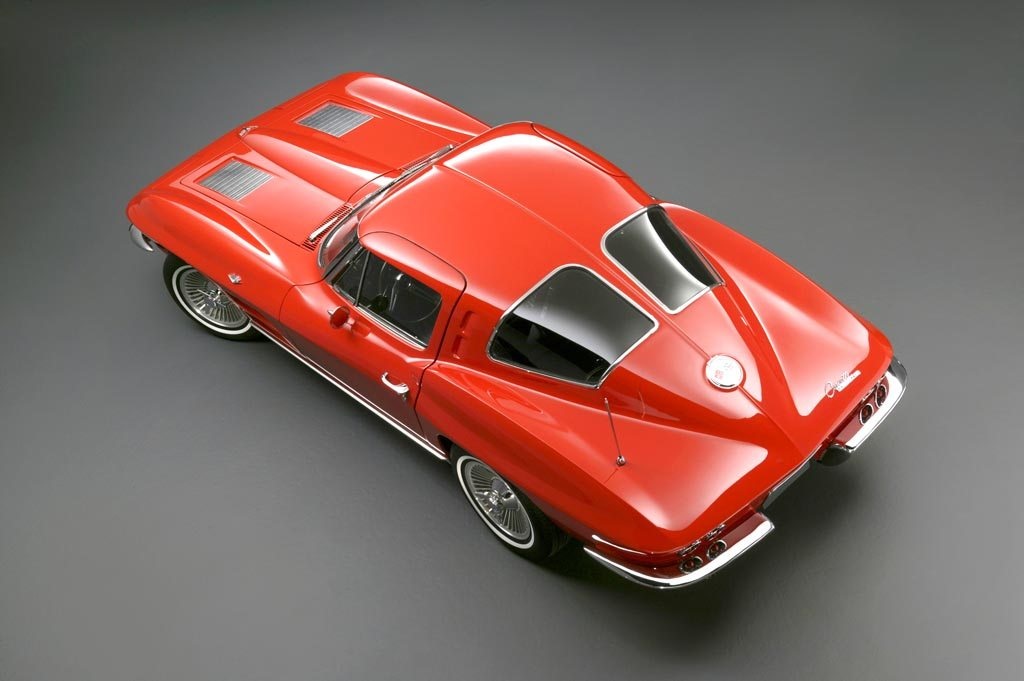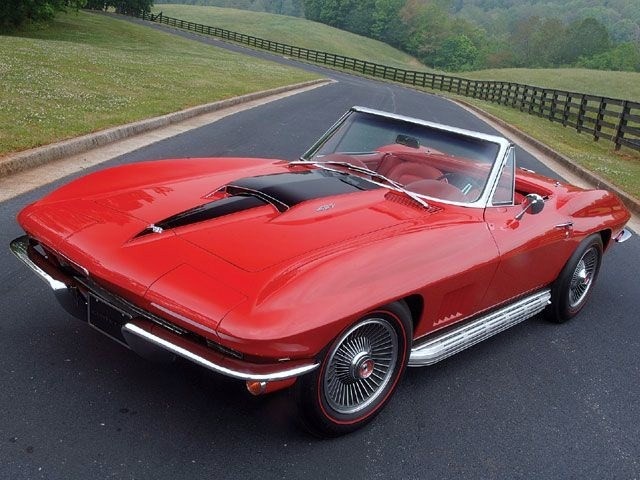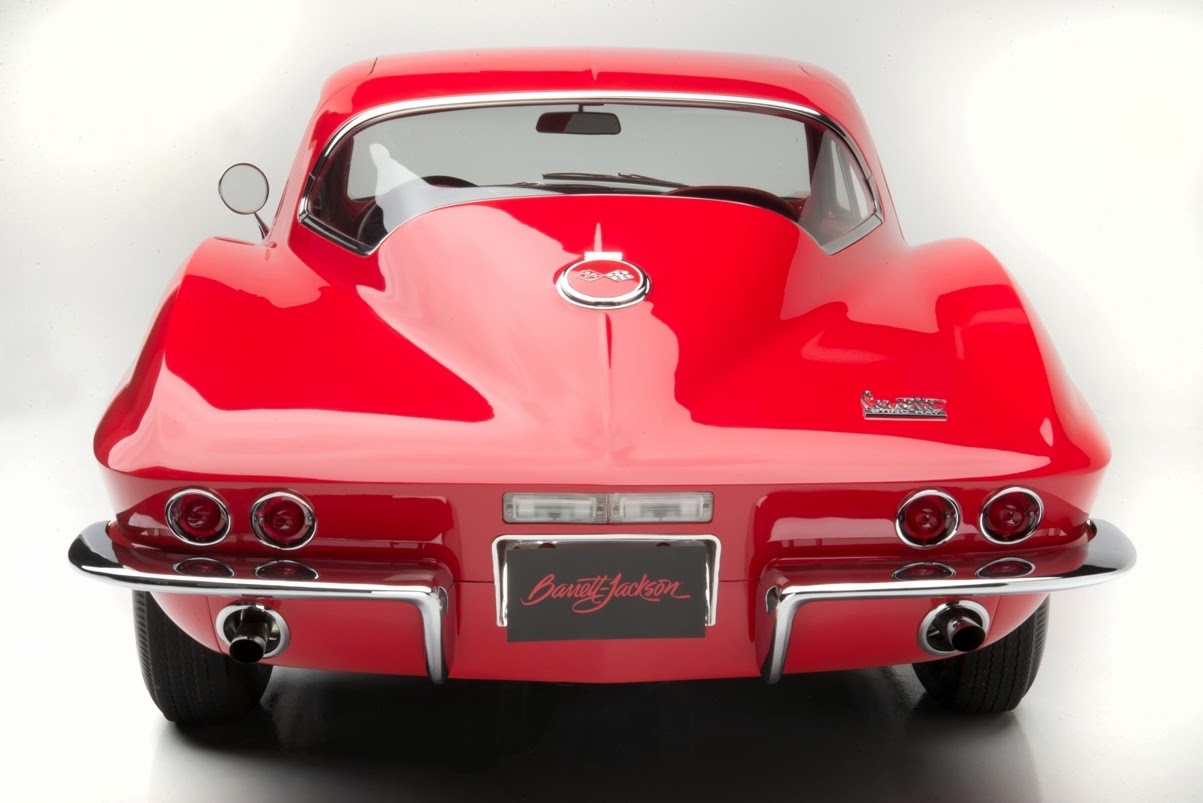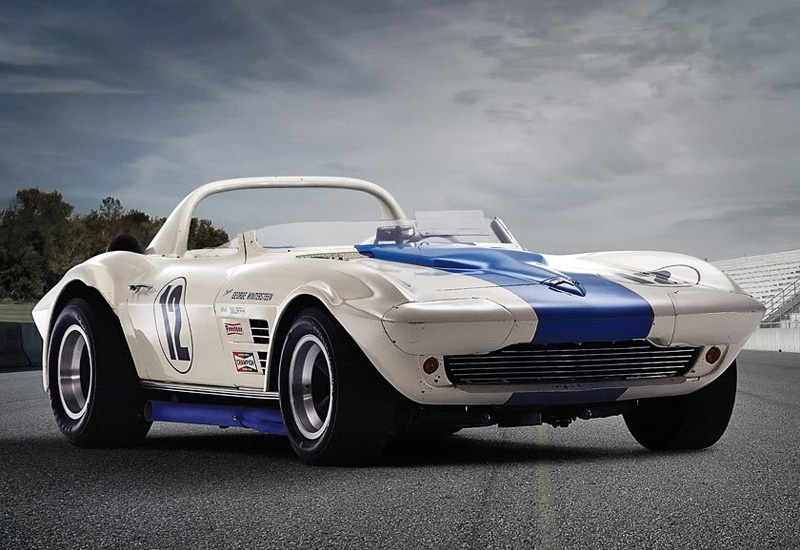C2 – Second Generation (1963 – 1967)
 |
Production began in 1963 for the mid-year Corvettes, it is also the model that ushered in the name "Sting Ray". The 1963 model was the first year for a Corvette coupe and it featured a distinctive tapering rear deck. Only the 1963 Corvette coupes featured the rare split rear window. The Sting Ray featured hidden headlamps, non-functional hood vents, and a Corvette first, independent rear suspension. Maximum power for 1963 was 360hp and was raised to 375hp in 1964. On 1964 models the decorative hood vents were eliminated. |
 |
In 1965, four-wheel disc brakes were introduced, as was a "big block" engine option: the 396ci V8. Side exhaust pipes were also optionally available in 1965, and continued to be offered through 1967. The introduction of the 425hp 396ci big block in 1965 spelled the beginning of the end for the Rochester fuel injection system. The 396ci option cost $292.70 while the fuel injected 327ci engine cost $538.00. Few people could justify spending $245.00 more for 50hp less, even though FI could deliver over 20 mpg on the highway and would keep delivering fuel despite high G-loading in corners taken at racing speeds. |
  |
|
 |
1967 was the final year for the C2 generation. The 1967 model featured restyled fender vents, less ornamentation, and back-up lamps which were on the inboard in 1966 were now rectangular and centrally located. The first use of all four taillights in red started in 1961 and was continued through the C2 line-up except for the 1966. |
 |
1967 had the first L88 engine option which was rated at 430hp, but unofficial estimates place the actual output at 560hp or more. Only twenty such engines were installed at the factory. From 1967 (to 1969), the Holley triple two-barrel carburetor, or Tri-Power, was available on the 427 L89 (a $368 option, on top of the cost for the high-performance 427). Despite these changes, sales slipped over 15%, to 22,940 (8,504 coupes, off close to 15%, and 14,436 convertibles, down nearly 19%).
|
  |
Zora Arkus Duntov, Corvette chief engineer came up with a lightweight version of the C2 in 1962. Concerned about Ford and what they were doing with the Shelby Cobra, GM planned to manufacture 100 Grand Sport Corvettes, but only five were actually built. They were driven by historic drivers such as Roger Penske, A. J. Foyt, Jim Hall, and Dick Guldstrand among others.
In 2011, Hollywood famously used a replica Grand Sport Corvette in the fifth installment of the Fast & Furious franchise. In the movie, the vehicle is involved in a heist gone wrong and ultimately ends up in a river at the bottom of a canyon as the main two protagonists make their great escape during the opening scenes. Today the five original cars (001-005) are all held by private owners, and are among the most coveted and valuable Corvettes ever built. 002 is exhibited in the Simeone Foundation Automotive Museum and is in running condition. |
| Previous Page | Previous Page |